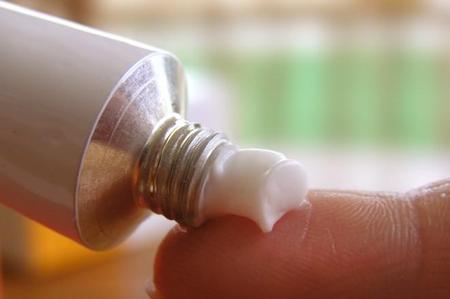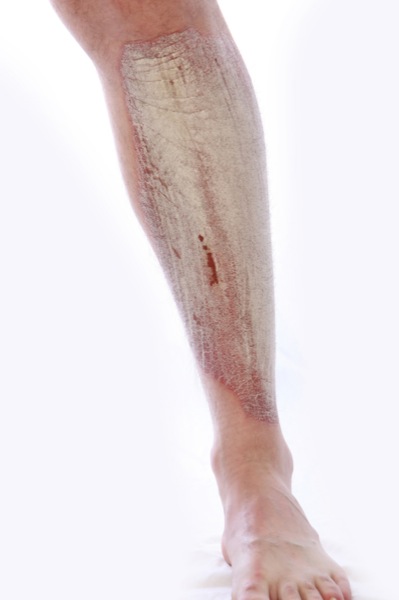Vaginal Psoriasis
Vaginal psoriasis, aka inverse psoriasis or flexural psoriasis, can be found in the creases and folds of the entire genital area. This includes the pubic area, the vulva, the creases from the thigh to the groin, even to the buttocks and anal area. While it doesn’t often occur, it can also affect the inner part of the vagina. Overall, this type of psoriasis is referred to as genital psoriasis.
Appearance of Vaginal Psoriasis
Usually genital psoriasis is NOT the typical white or silvery plaque psoriasis found on the elbows and knees. Instead the skin usually appears as smooth, red patches, with small red bumps or dots. They may also look a little cracked, with some red and white.
 Ointment for Psoriasis
Ointment for PsoriasisWhen to See a Doctor for Vaginal Psoriasis
You should see a physician for ANY type of rash or breakout in the genital area. While genital psoriasis is a skin issue and one normally would seek out a dermatologist for skin problems, it is okay to see your primary care physician or OB/GYN first. They might initiate treatment or they may promptly give you a referral to a dermatologist.

First Step in Treating Vaginal Psoriasis
The first order of treatment or even prevention is to wear cotton undies. Avoid the tight-fitting nylon or silk panties, as well as the thongs. Stick to the cotton, which is breathable.
Get rid of those butt-hugging, crotch-defining skinny jeans and wear pants that are looser and less likely to cause chaffing and sweating. If you gotta be greased up to get into your jeans, then chances are they are too tight.
Second Step in Treating Vaginal Psoriasis
The two most common ways of treating inverse psoriasis is through ultraviolet (UV) light therapy and topical, low-strength corticosteroid creams and ointments. However, prolonged use of corticosteroids is to be avoided because it tends to permanently thin the skin; and the skin in the vaginal or groin area is already pretty thin.
While UV light can be used to treat psoriasis in the genital region, you also need to use some caution, and only on the recommendation of your doctor. The dose has to be much lower than that you might use to treat psoriasis found elsewhere on the body. Also remember that overexposure to UV light can burn the tender skin of the genitals.
Medicines for Psoriasis of the Vaginal Area
Instead of using even low-potency steroid creams which can cause thinning of the skin and lead to permanent stretch marks, there are other topical alternatives. One is called Dovonex, which is a vitamin D derivative. The others contain tacrolimus and pimecrolimus and go by the brand names of Elidel and Protopic. They are nonsteroidal, anti-inflammatory creams that don’t cause atrophy or thinning.
Genital Psoriasis and Sex
Yes, you can still have sex when
you have vaginal or genital psoriasis. You may want to have a frank discussion
with your partner and explain the “rash” is simply an autoimmune response that
is not contagious. Assure them that it is not dangerous, and cannot lead to
either of you getting any type of infection. It is NOT an STD.
If you are using medicine on the area, you may need to exercise some caution in
the timing of sexual activity in relation to when you applied the topical
treatment. For instance, use the medicine in the morning and usually by evening
it will have absorbed and not be an issue for your partner.
There may be times during a psoriasis flare that you may wish to avoid sex due to discomfort or pain in the area. However, some have found that using a personal lubricant does help to alleviate the discomfort.
Remember, vaginal psoriasis can be treated and will often respond better to treatment than other types of psoriasis due to the thinner skin of the genital area.
Back to top Psoriasis en la pierna
Psoriasis en la piernaPágina de inicio
Mapa del sitio
Mapa del sitio en orden alfabético
